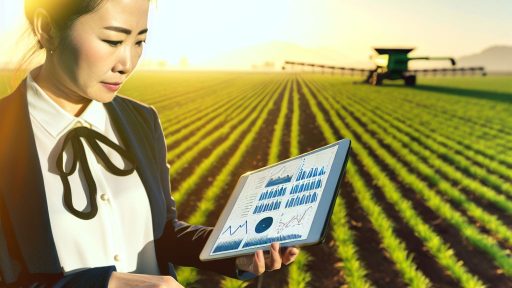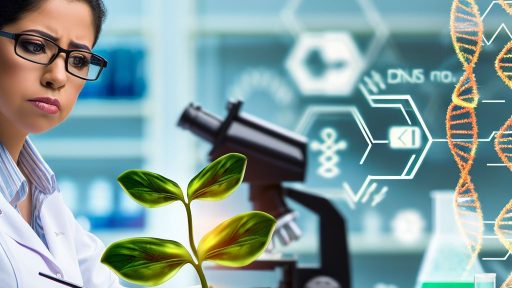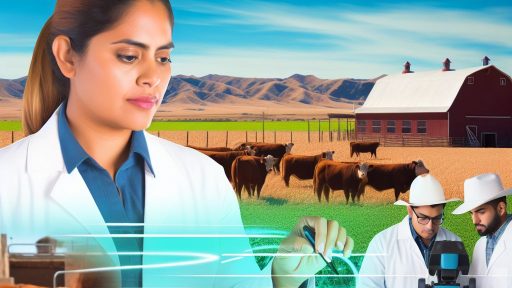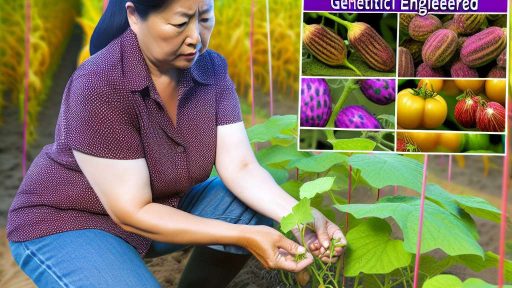Introduction to Controlled Environment Agriculture
Controlled Environment Agriculture, or CEA, revolutionizes modern farming.
This innovative method optimizes plant growth in controlled settings.
By managing light, temperature, and humidity, farmers enhance yield quality.
CEA minimizes the impact of external environmental factors.
Furthermore, it reduces the need for pesticides and herbicides.
As a result, food safety and sustainability increase significantly.
Circular supply chains thrive in CEA setups.
Local produce becomes more accessible to urban populations.
This approach supports food security in rapidly growing cities.
Moreover, it maximizes space by utilizing vertical farming techniques.
Technological advancements propel CEA into the mainstream.
Automation and data analytics enhance system efficiency.
For instance, sensors monitor plant health and environmental conditions.
Innovative lighting solutions, such as LED technology, accelerate growth rates.
These advancements enable year-round production regardless of climate.
Transform Your Agribusiness
Unlock your farm's potential with expert advice tailored to your needs. Get actionable steps that drive real results.
Get StartedConsequently, CEA presents a resilient solution to food production challenges.
Ultimately, it represents a key pillar for future agricultural practices.
Overview of Technological Advancements in Controlled Environment Agriculture
Automating Farming Processes
Automation transforms traditional farming into a precise science.
It allows for the consistent monitoring and adjustment of conditions.
Farmers can now integrate systems for watering, lighting, and nutrient delivery.
Robotic technologies enable tasks like planting and harvesting.
This reduces labor costs and increases efficiency dramatically.
Utilizing Advanced Sensors
Sensors play a critical role in controlled environment agriculture.
They collect real-time data on temperature, humidity, and soil conditions.
This data aids in making informed decisions for plant health.
Smart sensors also detect pests and diseases early.
Consequently, farmers can respond quickly to threats.
Implementing Data Analytics
Data analytics drives insight and decision-making in modern farms.
It compiles data from various sources and generates actionable intelligence.
Farmers can analyze trends related to crop yields and resource usage.
This analysis helps optimize growth conditions for different crops.
Moreover, it supports predictive modeling for future planting strategies.
The Benefits of Integrated Technologies
Integrating these technologies enhances overall farm productivity.
Farmers experience higher yields and lower operational costs.
Additionally, they can achieve greater sustainability through resource efficiency.
Thus, controlled environment agriculture becomes increasingly viable.
Automation, sensors, and data analytics reshape farming today.
The Role of Hydroponics and Aquaponics in Improving Yield and Resource Efficiency
Introduction to Hydroponics and Aquaponics
Hydroponics revolutionizes traditional farming methods.
It allows plants to grow without soil, using nutrient-rich water instead.
Showcase Your Farming Business
Publish your professional farming services profile on our blog for a one-time fee of $200 and reach a dedicated audience of farmers and agribusiness owners.
Publish Your ProfileAquaponics combines hydroponics with aquaculture.
This system utilizes fish waste to nourish plants.
Both methods significantly enhance resource efficiency on modern farms.
Benefits of Hydroponics
Hydroponics offers faster plant growth rates.
Plants receive controlled nutrients, leading to optimized growth.
Additionally, it uses significantly less water than traditional methods.
With hydroponics, farmers can cultivate crops year-round.
This method also minimizes pesticide use, promoting healthier produce.
Advantages of Aquaponics
Aquaponics creates a sustainable ecosystem for food production.
This system increases biodiversity on the farm.
Fish provide natural fertilizer for the plants.
Therefore, aquaponics reduces the need for chemical fertilizers.
The integration of fish farming and plant cultivation maximizes space utilization.
Resource Efficiency
Both systems drastically reduce water usage.
They recycle water within a closed-loop system.
This efficiency is crucial in areas facing water scarcity.
Moreover, hydroponics and aquaponics require less land compared to traditional farming.
As a result, they can produce higher yields in limited space.
Economic Impacts
Investing in hydroponics and aquaponics can boost farm profitability.
Farmers can market high-value crops, attracting premium prices.
These innovations also lower labor costs through automation.
Consequently, many farms report a quicker return on investment.
Ultimately, adopting these technologies supports local economies.
Challenges and Considerations
Despite their benefits, hydroponics and aquaponics pose challenges.
Initial setup costs can be high, deterring some farmers.
Moreover, technical knowledge is required for effective management.
Farmers must stay informed about nutrients and system maintenance.
Furthermore, market access for produce may limit profitability.
Gain More Insights: Innovations In Automated Machinery For Precision Agriculture
Sustainable Practices in Controlled Environment Agriculture
Energy Use in CEA
Controlled Environment Agriculture prioritizes energy efficiency.
Innovative technologies reduce energy consumption significantly.
For instance, LED lighting systems provide targeted wavelengths.
This method improves plant growth while minimizing energy use.
Additionally, energy recovery systems reclaim waste heat effectively.
By harnessing renewable energy sources, farms become more sustainable.
Water Conservation Techniques
Water management is crucial in controlled environments.
Drip irrigation systems deliver water directly to plant roots.
This approach maximizes water use efficiency compared to traditional methods.
Moreover, recirculating water systems reduce overall consumption.
These systems filter and reuse water, minimizing waste.
Showcase Your Farming Business
Publish your professional farming services profile on our blog for a one-time fee of $200 and reach a dedicated audience of farmers and agribusiness owners.
Publish Your ProfileSmart technologies monitor moisture levels, adjusting irrigation automatically.
Using Organic Inputs
Organic practices enhance soil health and crop quality.
Controlled environments can integrate organic fertilizers seamlessly.
Biological pest control reduces the need for chemical interventions.
This strategy promotes biodiversity and ecological balance.
Moreover, organic practices cater to growing consumer preferences.
Ultimately, they foster healthier ecosystems within CEA systems.
Discover More: How Farmers Can Benefit From Blockchain Technology In Supply Chains
Impact of Vertical Farming Solutions on Urban Agriculture and Food Security
Enhancing Food Production in Urban Areas
Vertical farming significantly boosts food production in urban environments.
This innovative approach allows for growing crops in limited spaces.
Urban areas experience high population density and limited arable land.
Thus, vertical farming emerges as a practical solution to these challenges.
Many cities face food deserts with limited access to fresh produce.
Vertical farms can supply fresh food to these underserved communities.
Reducing Transportation Footprint
Vertical farms often operate within or near cities.
This proximity reduces the carbon footprint associated with transportation.
Farming closer to consumers minimizes the need for long-distance shipping.
Moreover, it reduces spoilage rates, ensuring fresher produce.
Consequently, consumers benefit from enhanced food quality and safety.
Utilizing Technology for Efficiency
Vertical farming integrates advanced technologies for optimal growth.
These technologies include hydroponics, aeroponics, and artificial lighting.
Automation and data monitoring enhance resource management.
Efficient water usage and nutrient delivery systems are vital.
Ultimately, this leads to higher yields and reduced waste.
Addressing Food Security Challenges
Food security remains a pressing global issue.
Vertical farming presents a solution by increasing local food availability.
This method can produce 365 days a year, regardless of climate conditions.
Urban populations can rely on a consistent supply of fresh produce.
Additionally, vertical farms reduce vulnerability to supply chain disruptions.
Resilience against climate change impacts is crucial for urban food systems.
Creating Job Opportunities
Vertical farms create diverse job opportunities within urban settings.
They require skilled workers for various roles, from farming to technology management.
Engaging local communities fosters economic growth and innovation.
Education and training programs can enhance workforce skills.
Moreover, these jobs contribute to the overall local economy.
Promoting Sustainable Practices
Vertical farming emphasizes sustainability in food production.
It uses less water compared to traditional farming methods.
Recycling systems minimize waste and promote environmental stewardship.
Additionally, vertical farms can reduce reliance on chemical pesticides.
Overall, they contribute positively to urban ecosystems.
Showcase Your Farming Business
Publish your professional farming services profile on our blog for a one-time fee of $200 and reach a dedicated audience of farmers and agribusiness owners.
Publish Your ProfileYou Might Also Like: Essential Agri-Fintech Tools That Every Modern Farmer Should Use
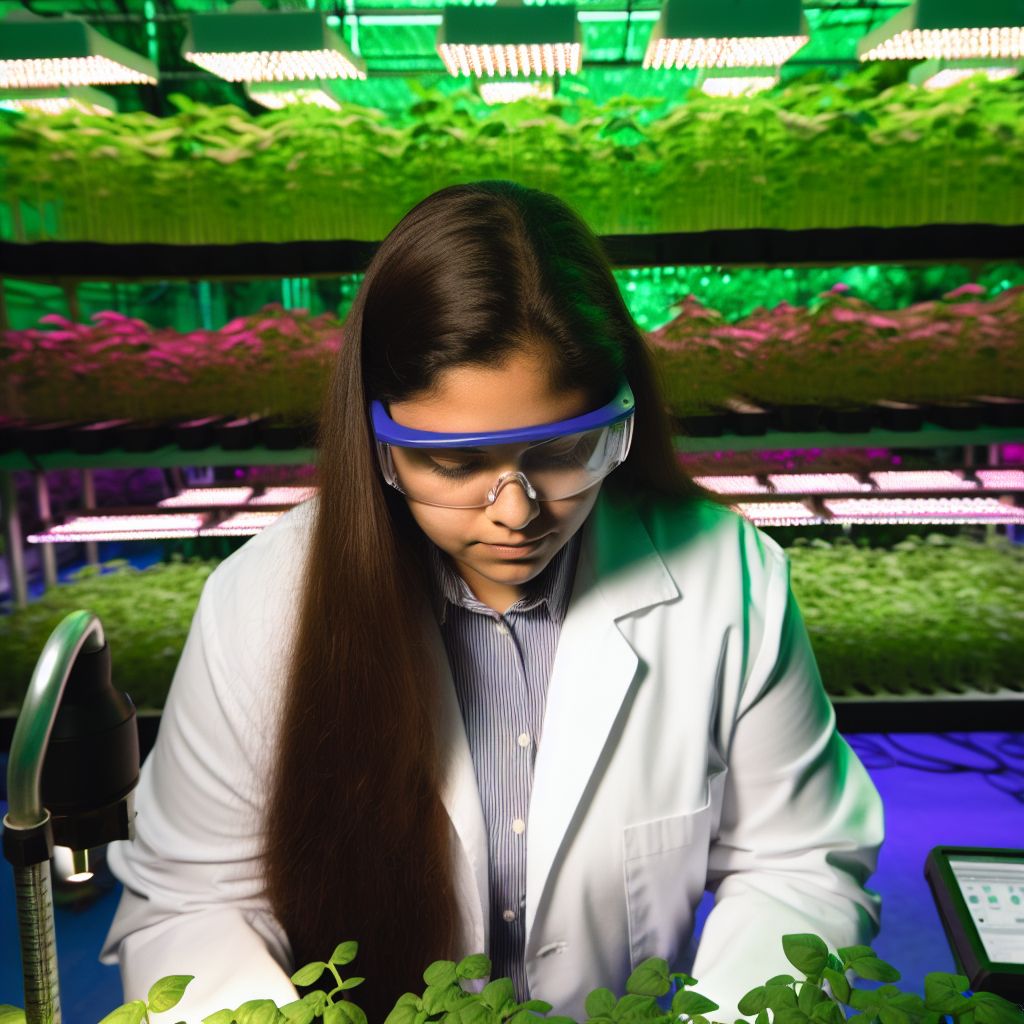
Case Studies of Successful Implementation of CEA
North America: Urban Agriculture in Canada
In Canada, urban agriculture has embraced controlled environment agriculture (CEA) techniques.
Vancouver’s Urban Farm is a prime example of this trend.
The farm implements hydroponics systems to optimize space and yield.
This method enables year-round production of leafy greens.
As a result, it reduces transportation emissions and provides fresh produce to local communities.
Europe: Vertical Farming in the Netherlands
The Netherlands leads Europe in innovative CEA solutions.
Companies like PlantLab have pioneered vertical farms for urban areas.
They utilize advanced lighting and climate control systems.
This approach maximizes crop growth while minimizing water usage.
Consequently, these farms thrive in urban settings where land is scarce.
Asia: Aquaponics in Japan
Japan has successfully integrated aquaponics into controlled agriculture.
Farmers in Tokyo use this method to grow fish and plants together.
The symbiotic relationship improves overall efficiency and sustainability.
Moreover, this system produces two food sources from limited space.
Japanese cuisine benefits from fresh, locally sourced ingredients.
Africa: Sustainable Greenhouses in Kenya
Kenya is embracing CEA through sustainable greenhouse farms.
Organizations like GreenTec are helping local communities increase food security.
These greenhouses use solar energy and rainwater harvesting techniques.
Farmers report improved crop yields and reduced reliance on imports.
This initiative empowers smallholder farmers and enhances resilience.
Australia: Innovative Field Systems
Australia’s agricultural sector is adopting innovative CEA strategies.
Companies such as RipeNearMe connect growers directly with consumers.
This model encourages the use of controlled environments to grow diverse crops.
As a result, local farmers reach markets without intermediaries.
This innovation fosters community support and sustainable practices.
Delve into the Subject: Emerging Agri-Fintech Trends Every Farmer Should Embrace
Challenges and Limitations Faced by Modern CEA Systems
High Initial Costs
Modern controlled environment agriculture systems often require significant upfront investment.
This cost includes advanced technology, infrastructure, and specialized equipment.
Consequently, many farmers struggle to secure the necessary financing.
Moreover, ongoing maintenance expenses can also be quite high.
These financial barriers can discourage entry into this innovative farming method.
Crop Selection Issues
Not all crops thrive in controlled environments.
Some crops require specific conditions that may be hard to replicate.
Additionally, market demand influences profitable crop selection.
Farmers may find it challenging to balance these factors effectively.
Consequently, choosing the right crop can be a crucial decision for profitability.
Energy Consumption Concerns
Controlled environment agriculture systems typically consume a lot of energy.
This energy intensity raises concerns about sustainability and operational costs.
Farmers must explore efficient energy sources to mitigate this issue.
Showcase Your Farming Business
Publish your professional farming services profile on our blog for a one-time fee of $200 and reach a dedicated audience of farmers and agribusiness owners.
Publish Your ProfileUsing renewable energy can reduce the environmental impact significantly.
However, this transition often requires additional investment and planning.
Technological Dependence
Modern CEA systems are highly reliant on advanced technology.
These technologies can malfunction, leading to crop loss and financial hardship.
Furthermore, continuous updates and training are necessary for effective operation.
This technological dependency can be daunting for some farmers.
They may lack the skills or resources to adapt quickly to changes.
Market Competition
As CEA gains popularity, competition among producers increases.
This competitive environment can squeeze profit margins significantly.
New entrants must distinguish themselves to succeed in this market.
Additionally, established producers can dominate through economies of scale.
Farmers must constantly innovate to stay relevant and profitable.
Future Trends in Controlled Environment Agriculture
Integration with Artificial Intelligence
Artificial intelligence is transforming controlled environment agriculture (CEA).
AI systems enhance crop monitoring and management effectively.
Farmers utilize AI to predict growth patterns accurately.
These predictions help optimize resource use significantly.
Machine Learning Applications
Machine learning algorithms analyze vast datasets quickly.
This capability improves decision-making processes significantly.
Farmers benefit from data-driven insights for crop management.
Consequently, pest and disease management becomes more efficient.
Automation of Farming Processes
Automation is a key trend in modern CEA systems.
Robotic systems perform planting, harvesting, and packaging tasks.
This automation reduces labor costs and increases precision.
Furthermore, it allows farmers to focus on strategic decisions.
Data Integration and IoT Technologies
Data integration connects various agricultural systems seamlessly.
IoT devices collect real-time data from the farm environment.
This information aids in immediate adjustments to growing conditions.
Farmers gain valuable insights for optimizing growth conditions.
Sustainable Practices Enhanced by Technology
Embarking on sustainable farming practices is increasingly important.
AI and machine learning help predict and manage environmental impacts.
This approach promotes efficient energy use and resource conservation.
Advantages include reduced waste and enhanced crop yield sustainability.
Collaborative Farming and Shared Resources
Collaboration among farmers fosters shared technology use.
They can access advanced AI tools without significant investment.
Pooling resources enhances overall productivity and innovation.
This collaborative trend is crucial for future agricultural resilience.

